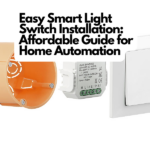Guide: Choosing the Optimal Smart TV System

Table of Contents:
- What is a Smart TV?
- What Interfaces Does a Smart TV Have?
- What Features Does a Smart TV Offer?
- Important Sound Formats for Smart TVs
- System Requirements for a Smart TV
- Smart TV System Requirements
- What Resolution Do Smart TVs Have?
- Advantages and Disadvantages of a Smart TV
- How Does Voice Control Work with a Smart TV?
- How Can I Watch Television with a Smart TV?
- What are the Best Smart TV Brands?
- How Can I Upgrade a Regular TV to a Smart TV?
1. What is a Smart TV?

A Smart TV is a television set that has internet connectivity, enabling access to a wide range of applications, streaming services, and browsers.
2. What Interfaces Does a Smart TV Have?
A Smart TV should offer various interfaces for additional memory cards or different USB slots. Standard interfaces include:
- Triple Tuner: Supports DVB-T (antenna), DVB-C (cable), and DVB-S (satellite).
- CI+ Interface: Accepts a decoder card for paid additional channels and decrypts them.
- Bluetooth: Connects with Bluetooth keyboards, headphones, or other input devices.
- USB Interfaces: Connects with USB drives or hard disks for USB recording.
- HDMI CEC: Allows control of all devices connected via HDMI CEC with one remote.
- HDMI ARC: Provides an audio return channel, essential for connecting a soundbar.
3. What Features Does a Smart TV Offer?
Smart TVs offer a plethora of features, including:
- HbbTV: Interactive teletext successor.
- Web Browser: Enables internet browsing.
- Voice Assistants: Often compatible with Alexa, Google Assistant, or Bixby.
- AirPlay and DLNA Support: Allows content transfer from Apple devices or other DLNA-certified devices.
- Mirror Cast, Chrome Cast: Supports additional wireless transmission formats.
4. Important Sound Formats for Smart TVs
A broadband connection is essential for using all Smart TV features. For smooth HD video transmission, bandwidth should be at least 6 Mbps. Amazon recommends a minimum internet bandwidth of 15 Mbps for streaming in 4K Ultra HD.
5. System Requirements for a Smart TV
Ein Breitbandanschluss ist essentiell für die Nutzung aller Smart TV-Funktionen. Für eine störungsfreie Übertragung von HD-Videos sollte die Bandbreite mindestens 6 Mbit/s betragen. Für das Streamen in 4K Ultra HD empfiehlt Amazon eine Internet-Bandbreite von mindestens 15 Mbit/s.
6. Smart TV System Requirements
- HDMI Interface: Must support HDCP 2.2 for Fire TV devices and other home cinema equipment.
- Internet Bandwidth for Video Streaming: At least 6Mbps for HD quality, 25 Mbps for Ultra-HD quality (4K UHD).
- DVB-T/S/C Tuner: For receiving cable, satellite, or terrestrial broadcasters. A Triple or Twin Tuner is advantageous here.
7. What Resolution Do Smart TVs Have?
Generally, Smart TVs are available in almost all sizes, starting with a 32-inch screen diagonal. The most popular size currently is 55 inches. A 32-inch TV typically offers Full HD resolution. From a 43-inch size, current TVs provide 4K UHD resolution.
In the table, we have listed size, resolution, and recommended viewing distance:
| Inch | Diagonal in cm, approx. | Resolution | Ideal Sitting Distance, approx. |
|---|---|---|---|
| 32 | 81 | Full HD, 1.920 x 1.080 Pixel | 2 m |
| 43 | 108 | 4K UHD, 4.096 x 2.160 Pixel | 1,60 m |
| 49 | 123 | 4K UHD, 4.096 x 2.160 Pixel | 1,80 m |
| 55 | 139 | 4K UHD, 4.096 x 2.160 Pixel | 2,10 m |
| 65 | 163 | 4K UHD, 4.096 x 2.160 Pixel | 2,50 m |
| 75 | 190 | 4K UHD, 4.096 x 2.160 Pixel | 2,80 m |
8. Advantages and Disadvantages of a Smart TV
Advantages:
- Independence from linear traditional TV programming: With a Smart TV, you’re not limited to linear TV programming and can watch content whenever it suits you.
- Voice Control: For Alexa or Google Assistant-compatible Smart TVs, voice control simplifies operation, especially beneficial for physically impaired individuals.
- Cost Savings: A Smart TV saves the separate purchase of a set-top box or a video streaming stick.
- High Entertainment Factor: In addition to TV programs, you can also install and play games.
- Access to Media Libraries: Complements the linear TV program with free media libraries, so you can catch up on missed shows.
- Creation of Personal TV Programs: By using video streaming apps, you can put together your own TV program.
- Integration of Music Streaming Services: Turns your TV into a media center by integrating music streaming services like Amazon Music Unlimited, Spotify, or other providers.
Disadvantages:
- Data Collection: Allows third parties and Smart TV manufacturers to collect usage data, which can raise privacy concerns.
- Dependence on Manufacturer: The selection of available apps depends on the manufacturer and can be limited.
- Requires Fast Internet: Most smart functions require a fast internet connection.
9. How Does Voice Control Work with a Smart TV?
Most Smart TVs can be controlled not only with a remote but also via smartphone app, tablet, or voice. If Android is the operating system, Google Assistant is often integrated. Other manufacturers, like Grundig, opt for Alexa and integrate Fire TV into their devices. Many Smart TV manufacturers now make their devices compatible with Amazon Alexa and Google Assistant. The TV is connected to a smart speaker like Amazon Echo or Google Home, and the user can change program channels, turn the TV on and off, or start apps and movies via voice command.
10. How Can I Watch Television with a Smart TV?
With a Smart TV, users can become independent from traditional television via antenna, cable, or satellite. The TV program then comes over the internet. Via the apps of specific TV streaming providers like HBO, Amazon, Netflix the TV program is streamed to the screen. The user simply calls up the respective app on the Smart TV. It’s like the Smart TV is a huge smartphone.
11. What are the Best Smart TV Brands?
Nowadays, almost every TV is a Smart TV. Among the most renowned Smart TV brands and models, according to our test overviews, are various manufacturers that should be updated due to constant developments and models.
Recommendations:
- Amazon Fire TV-4-Series Smart TV with 50 inches (140 cm), 4K UHD
- Samsung Crystal UHD TV 4K AU7199 55 inches
- Hisense 75-Inch Class A6 Series 4K UHD Smart Google TV with Alexa Compatibility


SAMSUNG 55-Inch Class QLED Q70A Series - 4K UHD Quantum HDR Smart TV with Alexa Built-in
$850 -$950 

12. How Can I Upgrade a Regular TV to a Smart TV?
If you lack the funds for a Smart TV, a regular TV can also be upgraded. A TV stick or dongle like the Amazon Fire TV Stick or Google Chromecast is necessary. The following requirements must be met to upgrade a TV to a Smart TV:
- Broadband internet connection
- TV with HDMI port
- Streaming Stick like Amazon Fire TV Stick Full HD
The upgrade is done in 4 steps:
- Plug the streaming stick into a free HDMI port on the TV.
- Select the HDMI input as the source on the TV where the video streaming stick was plugged in.
- Switch to the settings in the menu of the video streaming stick and select the Internet Connection option.
- Select the home network and enter the password.
The video streaming stick now takes over the smart functions. For example, if Amazon Fire TV is connected to a TV, apps like the internet media libraries of TV channels, as well as games or Netflix and Amazon Prime Video are available.
- Amazon Fire TV Stick
- Chromecast mit Google TV (HD)

All-new Amazon Fire TV Stick 4K streaming device, more than 1.5 million movies and TV episodes
$50 

Chromecast with Google TV (HD) - Streaming Stick Entertainment on Your TV with Voice Search
$30 
Further technology guides & instructions:
-
 17 Dec 2023Setting Up a Smart Home Theater: A Step-by-Step Guide
17 Dec 2023Setting Up a Smart Home Theater: A Step-by-Step Guide -
 27 Dec 2023Smart Home Gadgets Series: The Smart Garden Reviewed – Kickstart Your High-Tech Garden!
27 Dec 2023Smart Home Gadgets Series: The Smart Garden Reviewed – Kickstart Your High-Tech Garden! -
 31 Dec 2023Easy Smart Light Switch Installation: Affordable Guide for Home Automation
31 Dec 2023Easy Smart Light Switch Installation: Affordable Guide for Home Automation -
 06 Jan 2024The Lighting Revolution: How Smart Light Bulbs Can Transform Your Home
06 Jan 2024The Lighting Revolution: How Smart Light Bulbs Can Transform Your Home